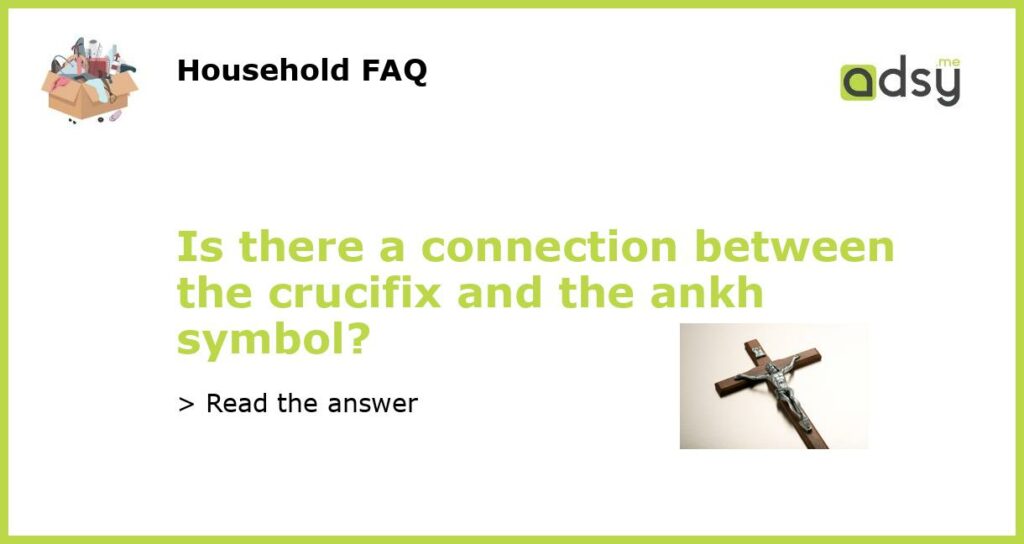Exploring the Origins of the Crucifix and Ankh Symbols
Throughout history, many symbols have been used to represent religious and philosophical ideals. Two such symbols are the crucifix and the ankh. The crucifix is commonly associated with Christianity, while the ankh symbol is often linked to ancient Egypt. Despite their apparent differences, some people have suggested that there may be a connection between the two symbols. In this article, we will explore the origins of each symbol and consider whether there is any evidence of a relationship between them.
The Symbolism of the Crucifix
The crucifix is a sacred symbol in the Christian faith, representing the death of Jesus Christ on the cross. The image of Christ on the cross is often depicted in artwork and is a central part of Christian theology. However, it was not until the 4th century AD that the crucifix became a widespread symbol. Prior to this, the cross itself was used as a symbol of Christianity, but without the image of Christ.
The Significance of the Ankh Symbol
The ankh symbol is an ancient Egyptian hieroglyph that represents life, fertility, and the afterlife. It is often seen in artwork depicting deities and was also used as an amulet by the ancient Egyptians. The origins of the ankh symbol are not known for certain, but it is believed to have been in use as early as the Old Kingdom period, around 2686-2181 BC.
Possible Connections between the Crucifix and Ankh Symbols
While there is no direct evidence to suggest that the crucifix and ankh symbols are connected, some people have pointed out similarities between the two. For example, both symbols are vertical in shape and feature a loop or circle at the top. Some people have suggested that the ankh symbol may have inspired the development of the crucifix, while others have suggested that the two symbols may share a common, prehistoric origin.
The Significance of Symbols in Religion and Culture
Whether or not there is a connection between the crucifix and ankh symbols, their significance in religion and culture cannot be denied. Symbols have the power to represent complex ideas and beliefs, and can often transcend language and cultural barriers. As such, they continue to be an important part of humanity’s shared history and legacy.






